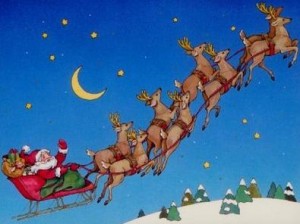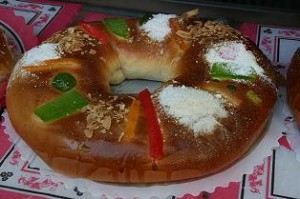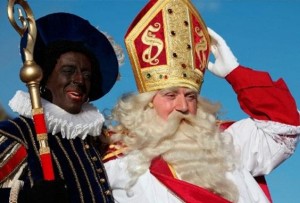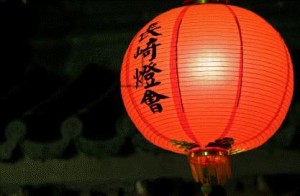
December 7, 2012, by Ollie
The Secrets of Christmas
Christmas is coming, the snow is falling in different places in the UK, late-night shopping is well and truly underway. Mince pies are being consumed, certainly too much in my case! But for many people in halls that Christmassy feeling is yet to arrive. For many of us we associate Christmas with being around our family, putting up the Christmas tree and decorations, having a go at mixing the Christmas cake, watching Christmas films and no doubt remembering the nativities we were part of as children.. I was once King Herod, Joseph and a shepherd (BBC – find my CV attached) but now we’re at University things are a little bit different. To try and put you all in the festive mood I thought I’d deliver an early present…
A guide about how different cultures and nationalities celebrate Christmas- just what you wanted!
The British/American Christmas
Our two cultures share a very similar Christmas experience. In the count down Christmas cards are sent to friends and family, the Christmas tree is put up as well as other festive decorations including lights and finally letters to Santa Claus/Father Christmas are written, detailing everything you want for Christmas that year, assuming you’ve been good! Come Christmas eve, warm milk and cookies/mince pies are left for Santa and carrots are put in the garden for the reindeer (who fly naturally!). On Christmas day, the 25th of December, presents have been laid under the tree by Santa and the family comes together to open presents and play with their new stuff. Come dinner time and a traditional meal is had. Turkey is the main element served with cranberry sauce, stuffing, pigs in blankets (sausages wrapped in bacon), roast potatoes and the detested sprouts as well as parsnips and other vegetables. The evening and coming days is spent relaxing with familyand continuing the festive merriments.
A Spanish Christmas
Whilst it is becoming more commonplace to celebrate ‘Christmas’ on the 25th with some present giving and a family meal of Turkey. True Christmas happens on the 5th January. In Spain it is not Santa who brings presents, it is the 3 kings (3 wise men) Melchior, Caspar, Balthazar. On the 5th the 3 wise men arrive by helicopter to a public area where a parade happens. From the floats presents and sweets are thrown to children. At night cookies, turron, mandarins are left for the 3 kings and water or milk for the camels. On the morning of the 6th presents that have been delivered by the 3 wise men at night aboard their camels are opened.
The traditional Spanish ‘Christmas’ meal starts with sharing of a cake known as Roscon de Reyes. Inside the cake are small presents, sometimes figures, or toys. Inside the cake there is always a King and a vegetable. Whoever gets the King from the cake gets good luck and whoever gets a vegetable inside the cake, must pay for the Roscon! As well as the Roscon de Reyes, proper Hot Chocolate is served (not hot chocolate milk) and food is dipped into the chocolate.
The Dutch/Belgian Christmas
Is celebrated on the 5th December in the Netherlands and on the 6th in Belgium. The present deliverer is not Santa it is the Patron Saint of Children, Saint Nicholas aka Sinterklaas. Sinta Klaas has a helper called the Zwarte Piet (Black Peter). The tradition started based off the actions of Saint Nicholas who went around Africa giving presents to kids. On the 5th he turns up in public in a parade style, often by boat, and throws treats to children along with Zwarte Piet, of whom there may be several. The sweets range from chocolate to candy, lollies and biscuits during the day. Children write to Saint Nicholas asking what they would like for Christmas and why they want it, they open the presents in the morning. They do however also receive presents on Christmas eve and have a meal with the family.
Traditional Greek
Saint Nicholas is a very important figure in Greece. He is the patron saint of sailors and is a very important figure during Christmas time. However, on the 1st of January St. Basil is celebrated. The equivalent of Santa Claus. Gifts are exchanged and water is the house is renewed with fresh water. A St. Basil’s tradition that links in Saint Nicholas.
Hungarian
At Christmas time in Hungary it is not Santa, Sinterklaas or the 3 Kings who bring presents, it is Jesus. Hungarians write to Jesus asking for presents at Christmas time and open them on Christmas day too.
Polish
Poles celebrate Christmas onn Christmas Eve, the 24th, not on Christmas Day. There is a dinner called Wigilia with 13 different dishes, and one extra place is set for an “unknown guest.” There are dishes such as barszcz, (beet soup w/dumplings), and carp the main meat of the meal, and makowiec (poppy seed cake). Before you start dinner, you wait for the 1st star to appear in the sky. Then you share oplatek with each other and can go on to eat the meal, after that Poles sing carols, open presents, and finish the celebration by going to midnight Mass.
China
In China, Make paper lanterns to decorate your house. Christmas trees are adorned with paper chains, paper flowers and paper lanterns and Dun Che Lao Ren comes to visit aka Christmas Old Man.
I’m only touching the tip of the iceberg here and if you delve deeper you’ll learn more about the traditions that are unique to different people. Let us not forget the true meaning of Christmas and join together, in love, peace, happiness and goodwill to all mankind!
No comments yet, fill out a comment to be the first








Leave a Reply